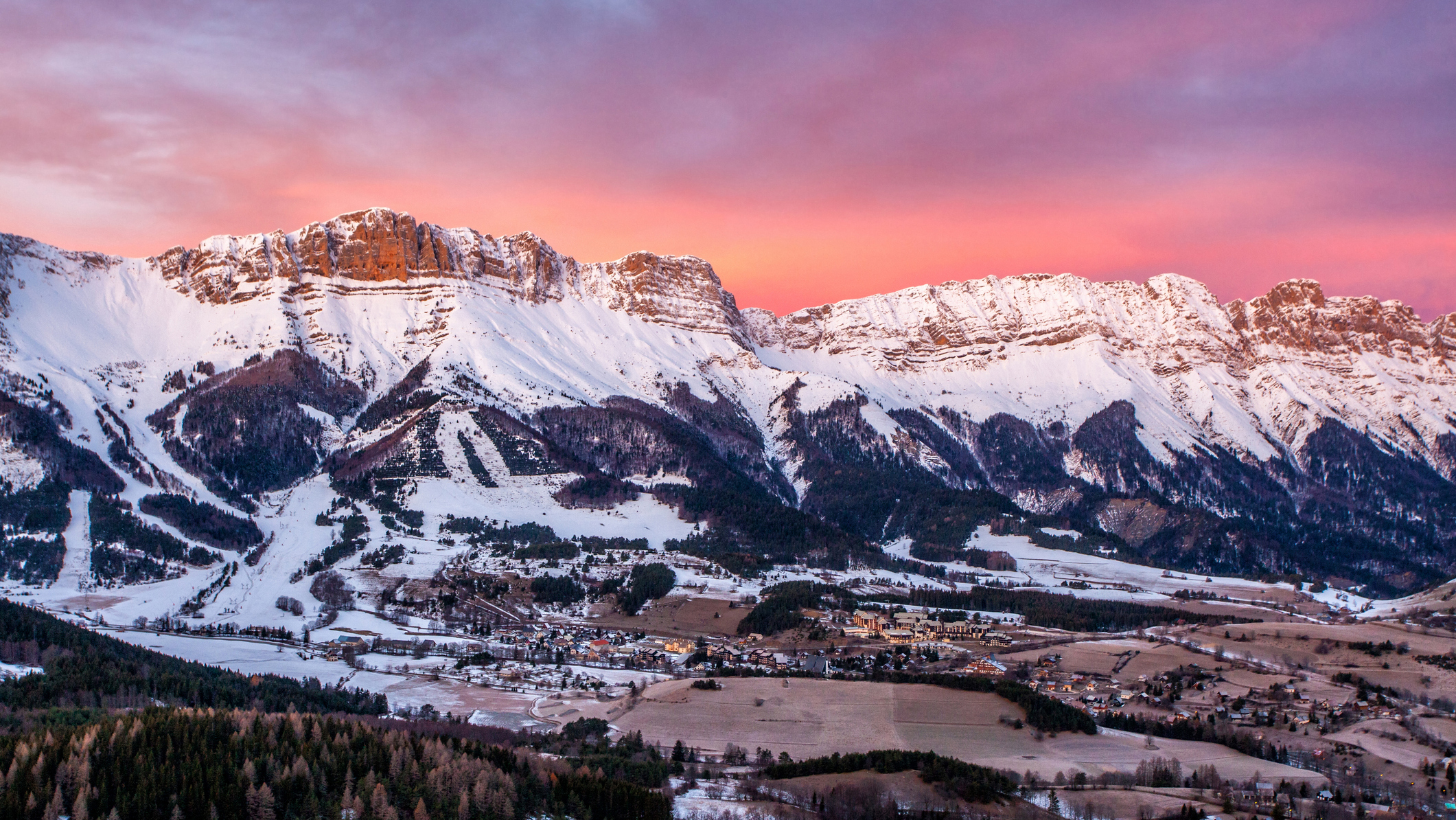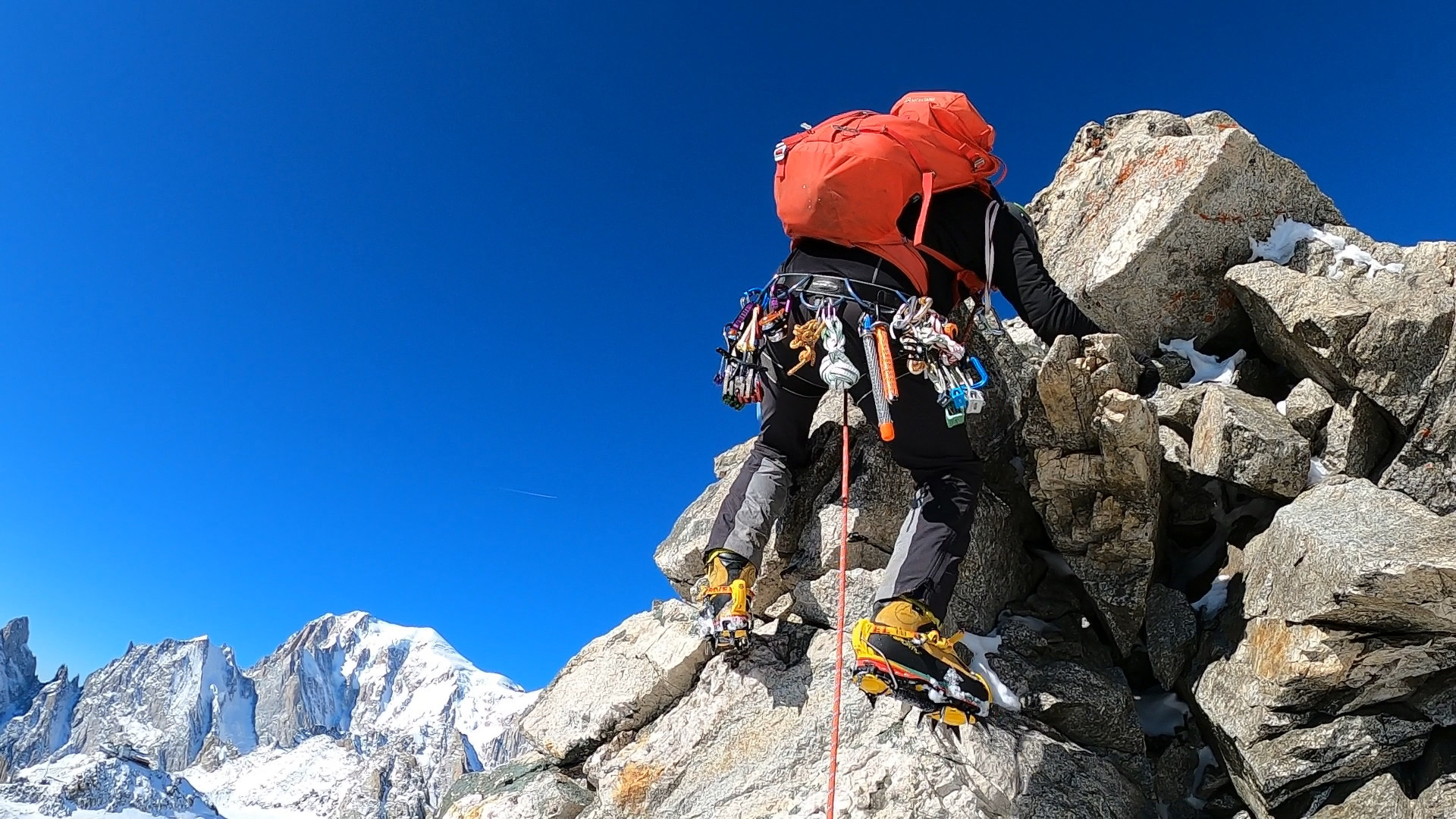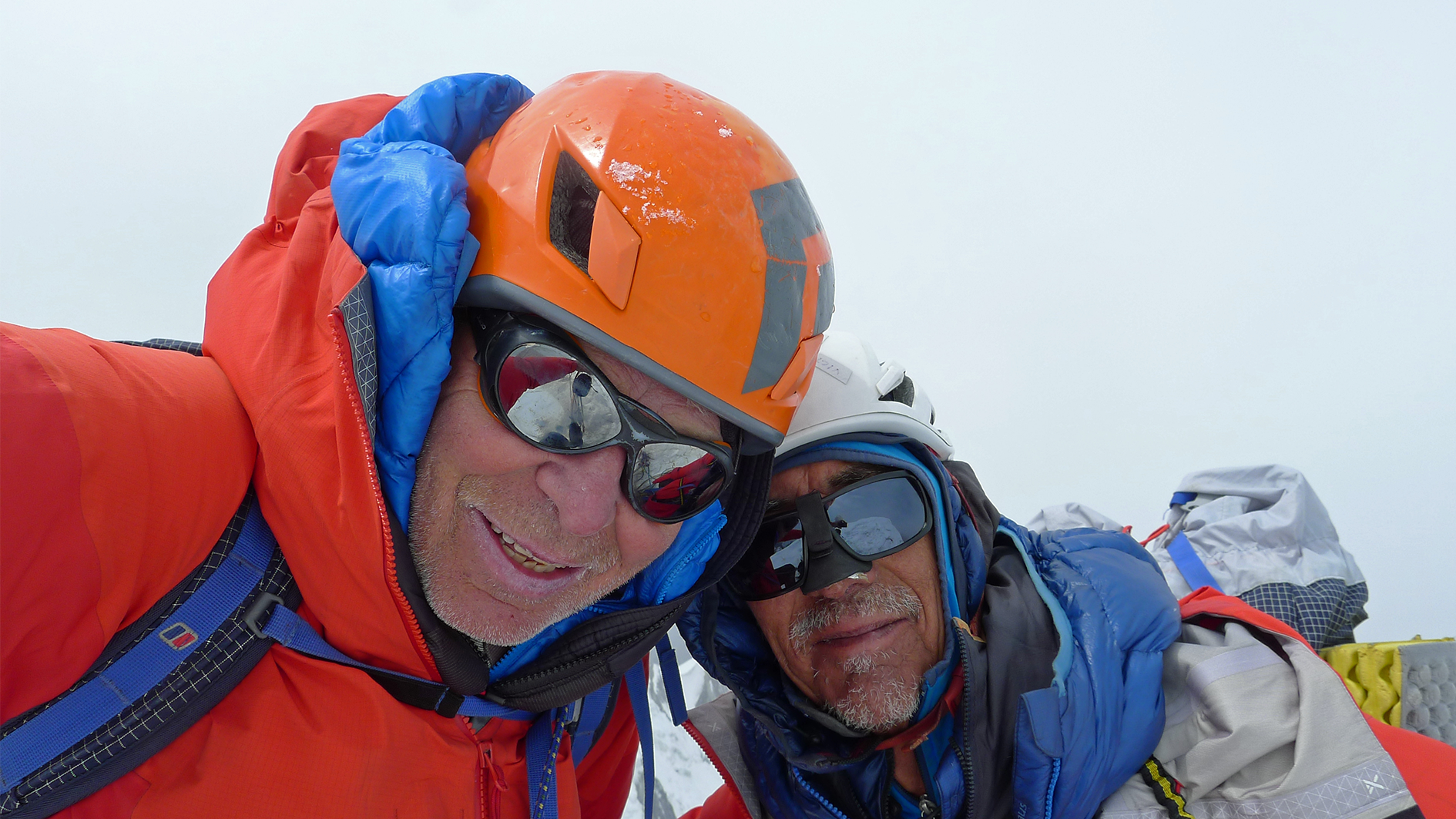
Every year, the world’s elite mountaineers gather in the European Alps to celebrate the most astonishing feats of technical alpinism on some of the world’s greatest and often previously unclimbed peaks. As part of this festival of mountaineering, prizes are awarded to the most notable climbs, selected by a jury of international experts.
These prizes are the Piolets d’Or, considered to be the most prestigious prizes in the world of alpinism. Since the inception of the awards in 1992, they’ve been at the center of their fair share of controversies and criticism. The history of the prize is one of celebration and scandal, staggering success and deep tragedy. However, they’ve undoubtedly shone a light on the very pinnacle of human exploration in the mountains.
We asked one of our mountaineering experts to reveal the origins of the awards, their history and controversies, the current format and their most legendary winners, many of whom rank among the world’s greatest mountaineers.
What are the Piolets d'Or
The Piolets d’Or – French for Golden Ice Axes – are mountaineering and alpinism awards, presented at an annual ceremony historically organized and presented by France’s Groupe de Haute Montagne.
Between the inaugural event in 1992 and 2007, a single annual prize was awarded to the ascent judged to be the finest of the previous year. This prize was the Piolet d’Or. Since 2009, there have been several prizes awarded at the event, including the Lifetime Achievement Award. The Piolets are widely thought of as mountaineering’s most prestigious awards, leading to some referring to them as ‘the Oscars of mountaineering’.
The 2024 edition will take place from December 8-11 in San Martino di Castrozza, in Trentino, Italy. It’s the first time the award has been hosted in the Dolomites.
Origins
- The Piolet d'Or was an idea conceived by the Group de Haute Montagne in France
- It was intended to generate publicity and funding for mountaineering expeditions
- The first event was held in 1992

In the early 90s, the Federation Francais de Montagne et Escalade (French Federation of Mountains and Climbing) no longer had the money to fund ambitious mountaineering expeditions. Corporate sponsorship had been easier to come by in the preceding decade but the well was beginning to run dry. Jean Claude Marmier, alpinist and then-president of the Groupe de Haute Montagne arrived at a solution: an annual prize to showcase remarkable achievements in mountaineering that would bring a wider audience and generate more interest in the pursuit, bringing the required funds with it. To publicise the event, he teamed up with Guy Chaumereuil, at that time the editor of Montagnes Magazine.
The first Piolet d’Or award was presented in 1992 at the Autrans Mountain Film Festival in France. Slovenians Andrej Štremfelj and Marko Prezelj beat French favorites Pierre Béghin and Christophe Profit to the prize for their ascent of the south summit of Kanchenjunga's south summit. It was chosen over the French pair's enchainment on K2 and was a controversial decision, the first of many…
Early controversies
- Only one annual award was given between 1992 and 2007
- Debate around the style of the winners' ascents raged in both 1998 and 2005
The Piolet d’Or has not been without its controversies down the years. This is hardly surprising given the difficulties the judges face when comparing the achievements of mountaineers on wildly different expeditions across the world, especially considering the fact that they weren’t there to witness the events in the first place. Throw in climbing ethics, the egos of elite mountaineers, as well as both friendly and unfriendly rivalries between nations, and you’ve soon got a real melting pot for controversy.
Between the inaugural ceremony in 1992 and 2007, there was only one award given each year, a fact that would often stir things up, especially when it came to the style of ascent used by the nominees. In both 1998 and 2005, Russian teams using traditional siege-style expedition tactics won the award for ascents of Himalayan giants Makalu and Jannu respectively.

In ’98, founder Jean Claude Marmier resigned from the jury, furious at the fact that it had been awarded to the Russians despite two members of their team being killed in the attempt and the fact that it had been chosen ahead of fast and light alpine style accents that were more in line with the ethos of the prize. He lambasted the decision as ‘a real disaster'.
Similarly, in 2005, the audience booed the choice of the winner, which had been selected over a daring solo ascent of K7 by American great Steve House. The ‘pure’, lightweight style of House’s ascent was in total contrast to the heavyweight siege tactics the Russians applied to Jannu. House was suitably scathing in his assessment: “The Russians did climb the north face of Jannu, an amazing accomplishment of engineering and perseverance, but they also mutilated it with their heavy style.” However, the American would go on to win the award with Vince Anderson a year later for their astonishing ascent of the Rupal Face on Nanga Parbat.
Meet the expert
Crisis in 2008 and the modern awards
- There was no event in 2008 while organizers sought to clarify what the awards stood for
- The Piolets D'or returned in 2009 with multiple prizes and an emphasis on celebration rather than competition
- It has been suggested that the awards encourage and celebrate risk taking in the mountains
The 2007 award was marred in controversy when Montagnes Magazine went ahead and hand-picked the finalists, without the input of the international jury. The Group Haute Montagne pulled out of the event, jury president Andrej Štremfelj resigned and winner Marko Prezelj refused to accept the prize. The Piolet d'Or was in crisis.
This led to the event being cancelled in 2008, while organizers debated a better way forward for the prize – or prizes as they would soon become. A new charter was drawn up to guide the international juries and it was decided that the ceremony shouldn’t exclusively be held in France.
In 2009, the ceremony returned, this time with multiple prizes: the Lifetime Achievement Award, the Spirit of Exploration Award, the Commitment Award and the Technical Difficulty Award. However, other than the Lifetime Achievement Award, the other three sub-categories were scrapped for subsequent ceremonies. Instead there would simply be multiple Piolet d’Or winners, with 'spirit of exploration', 'commitment' and 'technical difficulty' all appearing up in the judge's overall criteria instead.
The new approach of multiple awards was most controversially exemplified when, in 2013, the jury decided all seven nominated ascents were winners, to the chargrin of Montagne Magazine, who stated that the decision “weakens the event and its status”.

Those looking in from the outside have also questioned whether the prizes encourage risk-taking in the mountains by making what was already a highly dangerous pursuit more competitive. A 2021 article in the New York Times pointed out that seven Piolet d’Or winners had died since 2008, including famous names like Ueli Steck, David Lama and Hansjorg Auer.
The latter two even posthumously won Piolets d'Or in 2019, with family and friends accepting the prizes on their behalf. Lama had achieved the first ascent of Lunag Ri on the border between Nepal and Tibet, while Auer had achieved the first ascent of Lupghar Sar West in Pakistan. They later died together five months before the ceremony in an avalanche on Howse Peak in the Canadian Rockies. Argentine American mountaineer Rolando Garibotti didn’t pull any punches when pointing out the absurdity of the award, saying that awarding the prize to Lama and Auer was like “having a drinking party for somebody that died of liver disease”.
Where controversy and the profile of the Piolet d’Or is concerned, I’d suggest that there’s no such thing as bad publicity. It may be that the many bumps in the road throughout the history of the awards have helped the event to gain the high profile it enjoys today.
The Piolet d’Or Charter
- The international judging committee are guided by the charter
- The charter states that style takes precedence over the attainment of the objective

The many controversies that have dogged the Piolets d’Or have helped to shape its current charter, which details the ethics behind the awards and gives the international judging committee its criteria for evaluating ascents. The charter states:
The Piolets d'Or draw their inspiration from mountaineering's rich history and its evolution. Their purpose is not in essence to recognise the most significant ascents of the previous year, but to use these ascents to promote clear ethical messages regarding our practices as alpinists around the world, in line with the UNESCO classification of Alpinism as an intangible cultural heritage.
The awards aim to celebrate commitment, the taste for adventure, and the sense of exploration that lie behind the art of climbing in the world's great mountain ranges. They award individual or collective achievement.
In modern mountaineering, style of ascent takes precedence over attaining the objective at all costs. It is no longer a matter of employing huge financial and technical resources, such as bottled oxygen, fixed ropes, high-altitude porters, wide-spread drilling, helicopter support, so-called 'performance-enhancing' substances, and large numbers of people, in order to reach the top.
The Piolets d'Or throw the spotlight on progressive alpinism: imaginative and innovative new routes, doing more with less, and building on experience.

What’s notable is that the charter emphasizes style over objective, leaning towards a lightweight alpinist’s approach, rather than siege style expedition tactics. Critics would argue that this makes any ascents considered for selection riskier by their very nature. However, the current charter states that ascents should take into consideration the 'suitability of the route in light of objective dangers' – a nod towards sensible decision making.
Multiple award winners
- Paul Ramsden is the most decorated mountaineer in the award's history, with five wins
- He won three alongside fellow British alpinist Mick Fowler
- Slovenia's Marko Prezelj has won the award on four occasions, including the inaugural prize
Among the most prolific winners of the awards have been British duo Paul Ramsden and Mick Fowler. The latter recently made the news having achieved a first ascent of Pakistan’s Yawash Sar at the age of 68, having survived a battle with cancer just eight months earlier.
Ramsden and Fowler won the award three times together: for a new route on the north face of China’s Siguniang in 2003; an alpine style ascent of India’s sensational Prow of Shiva in 2013; and for their first ascent of Nepal's Gave Ding in 2016. Ramsden has won a further two awards, for the first ascent of Tibet’s Nyainqentangla South East with Nick Bullock in 2017 and the Phantom Line of Nepal’s Jugal Spire with Tim Millar in 2023. Ramsden’s five Piolets d’Or make him the most decorated individual in the event’s history.

Four times winner Marko Prezelj from Slovenia is a name that crops up time and time again in the history of the award. He won the inaugural prize in 1992, along with partner Andrej Štremfelj, for an ascent of the south pillar of Kanchenjunga’s south summit. Then, he found himself at the center of the storm that surrounded the 2007 prize, rejecting the award, which he’d won for the first ascent of Chomolhari’s north-west pillar alongside Boris Lorencic. He said: “Judging an ascent is senseless’. However, he went on to win the award on two more occasions: in 2014 for the first ascent of Hagshu’s north face in the Indian Himalaya, along with Aleš Česen and Luka Lindič; and in 2016 for a climb of the east face of India’s Cerro Kishtwar with Hayden Kennedy, Manu Pellissier and Urban Novak.”
Lifetime Achievement, Walter Bonatti Award
- From 2009, a Lifetime Achievement Award has been handed out
- It was named in honor of Italian alpinist Walter Bonatti, who was the first recipient
- Only one woman has won the award to date, Catherine Destivelle, in 2020

The Lifetime Achievement Award was first presented in 2009. Legendary Italian alpinist Walter Bonatti was the first recipient and the prize was named the Walter Bonatti Award in his honor. As well as playing a pivotal role in the first ascent of K2, Bonatti’s prolific career in the mountains saw him solo climb a number of remarkable routes in the Alps, including the south-west pillar of the Aiguille du Dru and the North Face of the Matterhorn in winter. In 1958, he and Carlo Mauri achieved a first ascent of the spectacular Gasherburm IV, the world’s 17th highest mountain, in the Karakorum.
The list of subsequent winners reads like modern mountaineering’s ultimate hall of fame, with legendary names like Reinhold Messner, Chris Bonington, Jeff Lowe and Wojciech Kurtyka among the first nine recipients of the prize. The first woman to win the Walter Bonatti Award was Catherine Destivelle, French sport climbing great and mountaineering powerhouse, in 2020. She remains the only female climber to have been recognized by the Walter Bonatti Award.







